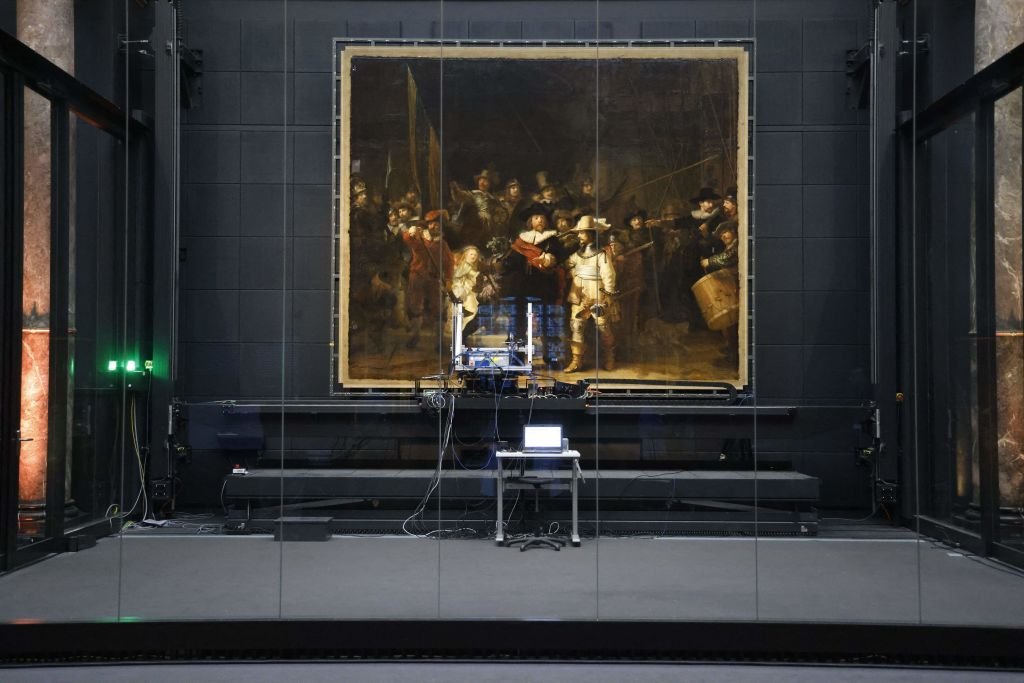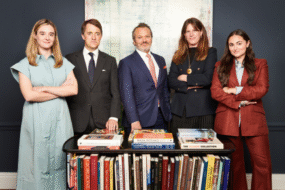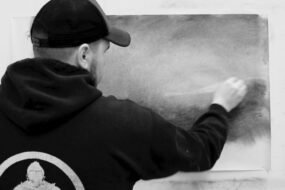

The use of artificial intelligence in the art world has been touted for its supposed ability to spot fakes and authenticate works by Old Masters, identify which emerging artists will become the next superstars and even create artworks without human involvement. It’s all very space age and largely niche. But behind the scenes in a rapidly changing art market, A.I. is already playing a significant role in price setting.
Perhaps necessarily. The art market is “notoriously opaque,” New York City art advisor Alex Glauber told Observer, as the only information on what something costs comes from auction sales records—and only a small percentage of artworks are sold at public auctions. Most sales are made by galleries and dealers who never disclose what buyers paid. How are art advisors supposed to inform their clients about a possible purchase if they don’t know whether a price is reasonable? How are insurers supposed to write fine art policies for collections if the appraisers they rely on have little to no access to the prices paid for artworks?
A growing number of companies have developed programs using A.I. technology to help with just that, including iownit, Wondeur, ARTDAI and the Winston Artory Group. Glauber, an advisory board member of ARTDAI, noted that while “databases allow you to compile auction comparables, ARTDAI distinguishes itself in what you can do with that information. The platform can autogenerate tailored reports that analyze auction sale patterns and market performance for an artist. From there, you can upload artwork details for works that have not been publicly sold at auction, and ARTDAI can analyze the inputted transaction data against historical auction results to surmise a fair market value based on public auction data.”
Part of what makes the art market seem opaque is that it is based on trust—trust in a dealer or advisor who presumably has a great deal of knowledge and a sense of what’s up-and-coming—rather than on verifiable fact. Maybe that dealer just wants you to buy the work of an artist he currently represents. Maybe that advisor owes someone a favor. Fact-based means verifiable information about art, not your nose for sniffing out quality, your keen eye, your expertise or your connoisseurship. Wondeur’s model is fed massive amounts of information about art galleries and museums, as well as about artists and artworks, particularly from the past 75 years—such as where an artist’s work has been exhibited, which institutions have collected the work, prices earned by dealers for sales of artworks, the primary medium and most acclaimed period of the artist, as well as the critical response to the work and the gender and nationality of the artist—to identify patterns in the career trajectories of artists of all types, from emerging to world-famous, that can create comparables. In the words of Olivier Berger, co-founder of Wondeur, “A.I. can understand why and when the value of an artist’s work changes over time, bringing explainability to art values in the past, present and future.” He added that “we can deliver technology to impact investing. A.I. can see opportunities in the market that are not seen by others.”
A number of technology companies have entered this field. Some—ArtWorldInsights.com and ArtBnk—have been left by the wayside, while others are still in development. The remaining technology enterprises distinguish themselves in specific ways. Anne Rappa, national fine arts and specie practice leader at Manhattan-based insurance brokerage company Marsh McLennan Agency, told Observer that “Wondeur’s model is based on predictability related to a large data set. ArtDAI is focused on the part of the market that represents the majority of sales and a smaller data set.”


She added that A.I. will not replace “honest, knowledgeable, experienced experts” in evaluating risk or processing claims but noted that Artory, which recently merged with the art advisory and appraisal company Winston Art Group to become the Winston Artory Group, is “routinely engaged by insurance companies for loss and damage claims.”
Even more of a skeptic is Roman Kraussl, a professor of finance at the University of Luxembourg who specializes in the art market, who said that “fact-based is good, but there is no fundamental value to art. It is all subjective. I can say to someone, ‘This should be your price, but if paying more or less makes you happy, then that will be your price.’”
Nanne Dekking, co-founder and co-executive chairman of the Winston Artory Group, also does not see artificial intelligence replacing human expertise now or anytime soon. However, like Berger, he sees the need for more facts rather than subjectivity when ascertaining the value of art.
“As art and collectibles become a larger share of private portfolios, many collectors and their advisors face a persistent challenge, which is understanding the current value of these assets in a way that is reliable, defensible and actionable. Traditionally, valuations in the art market have been episodic, updated only when needed for a transaction, estate planning, or insurance. However, as wealth advisors, insurers and private clients increasingly seek to treat art like any other financial asset, there is growing demand for real-time, data-driven insight.”
Dekking describes himself as a “firm believer in human expertise,” especially when it comes to inspecting “the physical artwork rather than just betting on that A.I. would do that work for me.” He added, “We’re not saying A.I. does appraisals for us, but what A.I. does is help us find comparables, not only because of image recognition.” There is a vast body of information about artworks that can be compiled from published references, exhibitions and previous owners. “So there’s a whole range of different data sets that A.I. mines that make it possible for us to start to make connections between different artworks.”
A key element of Artory, which is now available to Winston’s client base, is its use of blockchain technology to register and validate research and due diligence information on artworks in a client’s collection. Blockchain creates tamper-proof, time-stamped records of ownership, provenance, value and condition that enhance opportunities for liquidity and make it easy for collectors to grant permissioned access to insurers, attorneys, financial advisors and estate planners.
The benefit of blockchain is that vital information is not stored on one computer file but in a more secure system. “If you look at Los Angeles and the fires,” Dekking said, “there were actually people who didn’t store information about their artworks in the cloud because they didn’t trust that, and they had their own computers in the houses with the records of these artworks, and literally everything was lost.”









